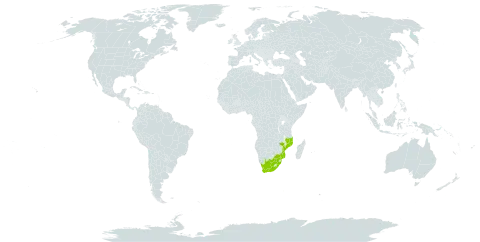Tufted, perennial herb, hydrophyte/helophyte, 0.1-1.0 m high; rhizome subhorizontal, compact. Leaves clustered, terete, up to 500 x 1 mm, wiry, with acute apices, forming auriculate sheath below. Bracts narrowly ovate, smooth, aristate, with entire margins; outer longer, patent and paler than inner. Inflorescence conical. Sepals 3, laterally folded, falcate, apiculate, keel prominent, densely ciliate. Petals 3, yellow. Flowering time Oct.-Dec. Fruit a narrowly cylindrical capsule.

